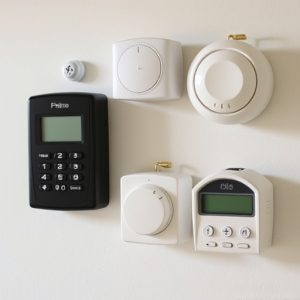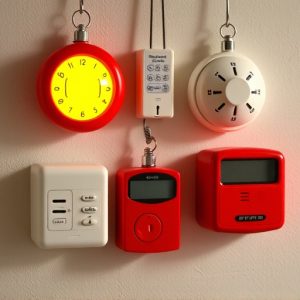Maximizing Safety: Personal Alarms and Coverage Area Optimization
Portable personal alarms provide a compact yet powerful tool for safety, offering high-decibel Perso…….
Portable personal alarms provide a compact yet powerful tool for safety, offering high-decibel Personal Alarm Sounds within defined Coverage Areas to deter danger and attract attention during emergencies. Effective systems incorporate distinct sounds and advanced technology (radio frequency, cellular networks, satellite) to maximize reach, catering to users with hearing impairments and ensuring prompt response times. Testing the alarm's range in diverse environments is crucial for optimal protection. Best practices include verifying a loud, cutting-through-noise Personal Alarm Sound and understanding the device's specific Coverage Area for tailored safety during various activities.
In today’s unpredictable world, portable protection devices with emergency alerts are essential tools for personal safety. This article explores how these lifesaving devices work and offers guidance on choosing the right one. We’ll delve into key components of effective emergency alert systems, emphasizing the critical factor of Personal Alarm Sound Coverage Area for optimal safety. Learn best practices for utilizing these devices to ensure peace of mind in an ever-changing world.
- Understanding Portable Protection Devices: A Lifesaving Tool
- Key Components of Effective Emergency Alert Systems
- Assessing Personal Alarm Sound Coverage Area for Optimal Safety
- Best Practices for Utilizing Portable Protection Devices with Alerts
Understanding Portable Protection Devices: A Lifesaving Tool
Portable protection devices, often in the form of personal alarms, are compact and powerful tools designed to ensure safety and offer peace of mind. These devices are engineered to emit a high-decibel Personal Alarm Sound within a specific Coverage Area, attracting attention and potentially deterring dangerous situations. Whether used for outdoor adventures, personal security, or emergency preparedness, their small size belies their immense value.
In critical moments, these portable protectors can serve as a vital means of communication, alerting nearby individuals or authorities about distressing circumstances. The Coverage Area varies across models, ensuring users have options tailored to different scenarios—from wide-open spaces to confined environments. By carrying or wearing one of these devices, individuals empower themselves to respond swiftly and effectively in emergencies, potentially saving lives.
Key Components of Effective Emergency Alert Systems
Effective emergency alert systems are built on a foundation of key components that ensure timely and impactful communication during critical situations. One of the central elements is the personal alarm sound—a distinct, loud, and easily recognizable signal designed to grab attention instantly. This sound should be accessible to users with various needs, including those with hearing impairments, through features like vibration or visual cues.
The coverage area is another critical aspect, determining how far and wide the alert can reach. A robust system considers both indoor and outdoor environments, employing a combination of radio frequency, cellular networks, and satellite technology to transcend physical barriers. By ensuring comprehensive coverage area, emergency alerts can be broadcasted to a maximum number of people in need, increasing response times and potentially saving lives.
Assessing Personal Alarm Sound Coverage Area for Optimal Safety
When considering portable protection devices with emergency alerts, one crucial aspect is understanding the Personal Alarm Sound Coverage Area. This refers to the range at which the alarm’s sound can be heard and effectively alert nearby individuals or authorities in case of distress. Assessing this coverage area is essential for optimal safety as it ensures that help can arrive promptly.
Factors influencing the Personal Alarm Sound Coverage Area include ambient noise levels, weather conditions, terrain, and the specific characteristics of the alarm device itself. To maximize protection, individuals should test the alarm’s range in their intended environment, ensuring it falls within a suitable distance for emergency response. This simple step can significantly enhance personal safety during unexpected situations.
Best Practices for Utilizing Portable Protection Devices with Alerts
When utilizing portable protection devices equipped with emergency alerts, it’s crucial to understand and adhere to best practices for optimal safety. First, ensure your device has a clear and loud Personal Alarm Sound that can be heard over distances, especially in noisy environments or areas with background noise like city streets. Regularly test the alarm function to verify its efficacy.
Second, familiarize yourself with the Coverage Area of the device. Different models offer varying ranges for both one-way communication and alert transmission. Ensure you understand these limits to guarantee that your device provides protection within your intended activity’s scope, whether hiking, camping, or traveling through unfamiliar territories.
Portable protection devices equipped with emergency alert systems are invaluable tools for personal safety, especially in uncertain situations. By understanding the key components and best practices outlined in this article, individuals can effectively utilize these devices to enhance their Personal Alarm Sound Coverage Area and ensure prompt assistance during emergencies. Embracing these innovative solutions is a step towards fostering safer communities and empowering folks to take control of their well-being.


